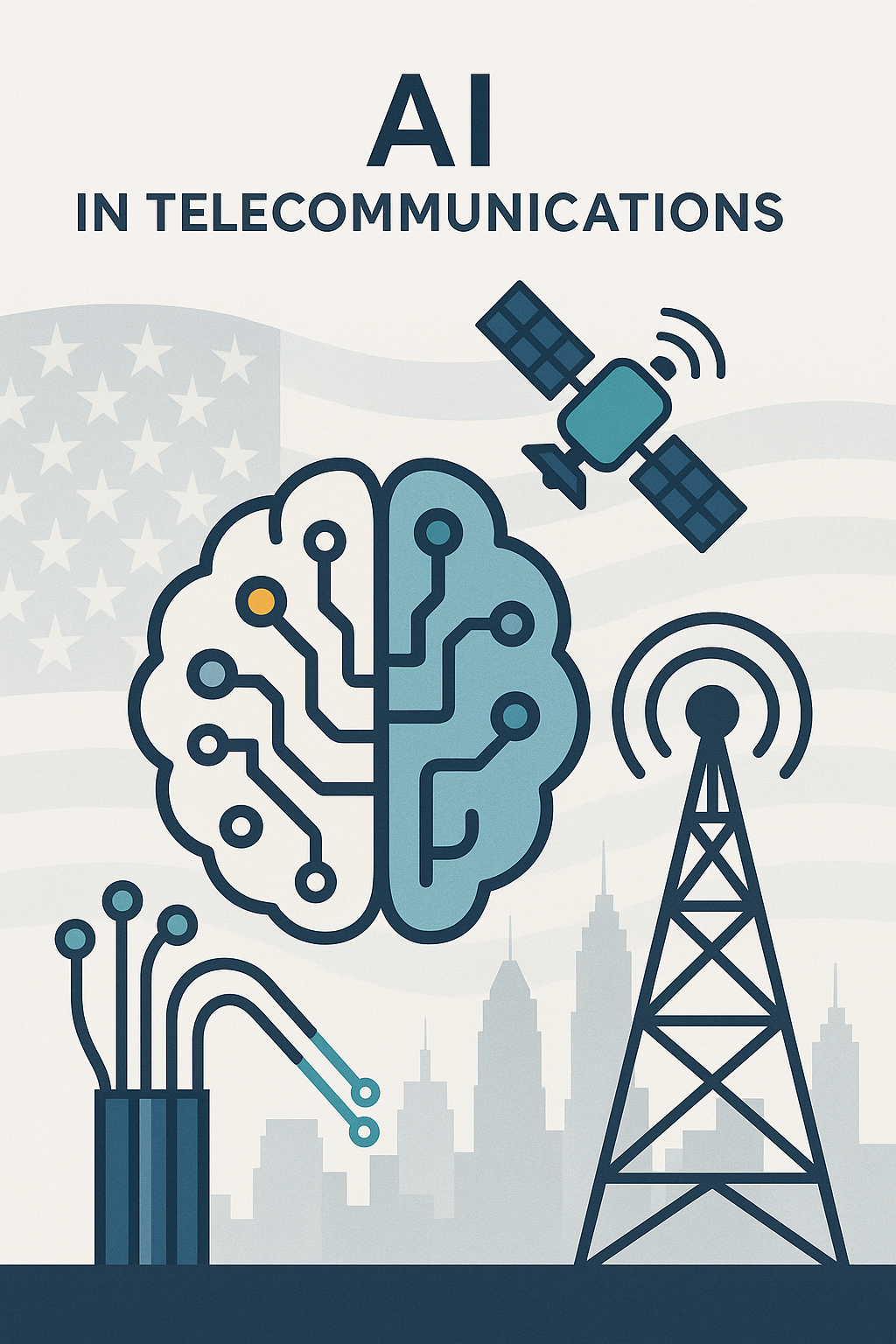
AI in Telecommunications: Transforming the U.S. Telecom Industry in 2025
Artificial Intelligence (AI) is rapidly reshaping the telecommunications landscape in the United States. As we move through 2025, AI in telecommunications is not just a buzzword—it’s a critical driver of innovation, efficiency, and customer satisfaction. This comprehensive guide explores how AI is revolutionizing telecom operations, the top applications, benefits, challenges, and what the future holds for U.S. telecom providers and consumers.
How AI in Telecommunications is Revolutionizing the U.S. Market
The integration of AI in telecommunications is enabling U.S. providers to deliver smarter networks, personalized customer experiences, and robust security. With the explosion of 5G, IoT devices, and data consumption, AI-driven solutions are essential for managing complexity and maintaining competitive advantage.
Key Drivers for AI Adoption in U.S. Telecom
- 📈 Data Explosion: Billions of connected devices generate massive data streams.
- ⚡ Demand for Speed: 5G and fiber networks require real-time optimization.
- 🛡️ Security Threats: Sophisticated cyberattacks demand intelligent defense.
- 🤝 Customer Expectations: U.S. consumers expect seamless, personalized service.
Top 10 Applications of AI in Telecommunications for 2025
AI is powering a wide range of telecom innovations. Here are the top 10 applications transforming the U.S. telecommunications sector this year:
- Network Optimization and Self-Healing
- Predictive Maintenance
- Fraud Detection and Prevention
- Customer Service Chatbots and Virtual Assistants
- Personalized Marketing and Recommendations
- Automated Service Provisioning
- Churn Prediction and Retention
- Dynamic Pricing Models
- Intelligent Traffic Routing
- Real-Time Quality of Service (QoS) Monitoring
Side-by-Side Comparison Table: Top 10 AI Applications in U.S. Telecom
| Rank | AI Application | Main Benefit | Example Use Case |
|---|---|---|---|
| 1 | Network Optimization & Self-Healing | Reduced downtime, efficiency | Automated rerouting during outages |
| 2 | Predictive Maintenance | Lower repair costs, uptime | Detecting failing hardware early |
| 3 | Fraud Detection & Prevention | Enhanced security | Blocking SIM swap scams |
| 4 | Chatbots & Virtual Assistants | 24/7 support, lower costs | AI-powered customer queries |
| 5 | Personalized Marketing | Higher conversion rates | Tailored offers via SMS/email |
| 6 | Automated Service Provisioning | Faster onboarding | Instant activation of new lines |
| 7 | Churn Prediction & Retention | Reduced customer loss | Targeted retention campaigns |
| 8 | Dynamic Pricing Models | Maximized revenue | Real-time plan adjustments |
| 9 | Intelligent Traffic Routing | Improved call/data quality | AI-based congestion management |
| 10 | Real-Time QoS Monitoring | Better user experience | Proactive issue resolution |
TIP: U.S. telecoms leveraging multiple AI applications together see the greatest improvements in operational efficiency and customer satisfaction.
Benefits of AI in Telecommunications for U.S. Providers and Consumers
Implementing AI in telecommunications delivers significant advantages for both service providers and their customers:
For Telecom Providers
- ✅ Operational Efficiency: Automate routine tasks, reduce manual errors, and optimize resource allocation.
- ✅ Cost Savings: Predictive maintenance and fraud prevention reduce losses and repair costs.
- ✅ Scalability: AI enables seamless scaling to handle millions of devices and users.
- ✅ Competitive Edge: Early AI adoption differentiates providers in a crowded market.
For U.S. Consumers
- 📱 Enhanced Service Quality: Fewer dropped calls, faster data speeds, and proactive issue resolution.
- 🤖 24/7 Support: AI chatbots provide instant assistance any time of day.
- 🎯 Personalized Offers: Tailored plans and promotions based on real usage patterns.
- 🛡️ Improved Security: AI-driven fraud detection protects against identity theft and scams.
Challenges and Considerations for AI in U.S. Telecommunications
While the benefits are substantial, deploying AI in telecommunications comes with its own set of challenges:
- 🔒 Data Privacy and Security: Handling sensitive customer data requires strict compliance with U.S. regulations.
- 🏗️ Integration Complexity: Merging AI with legacy systems can be resource-intensive.
- 🧑💻 Talent Shortage: Demand for AI and data science experts outpaces supply.
- ⚖️ Bias and Transparency: Ensuring AI decisions are fair and explainable is critical.
TIP: U.S. telecoms should prioritize transparent AI models and invest in workforce upskilling to maximize AI’s potential while minimizing risks.
The Future of AI in Telecommunications: What to Expect in the U.S. by 2030
Looking ahead, AI in telecommunications will continue to evolve, with several trends set to shape the U.S. market:
- 🌐 Autonomous Networks: Fully self-managing networks that require minimal human intervention.
- 🧠 Edge AI: Processing data closer to the source for ultra-low latency applications.
- 🕵️ Advanced Security: AI-driven threat intelligence to combat increasingly sophisticated cyberattacks.
- 🤝 Hyper-Personalization: Real-time, context-aware services tailored to individual users.
- 🚀 AI-Driven 6G: Early research into 6G networks will rely heavily on AI for design and management.
Conclusion: AI in Telecommunications is Powering the Next Era of U.S. Connectivity
AI in telecommunications is no longer a futuristic concept—it’s a present-day necessity for U.S. telecom providers striving to deliver faster, smarter, and more secure services. In 2025, AI is driving network optimization, predictive maintenance, fraud prevention, and personalized customer experiences, fundamentally transforming how Americans connect and communicate.
For telecom companies, embracing AI means greater efficiency, cost savings, and a clear competitive edge. For consumers, it translates to better service quality, enhanced security, and more tailored offerings. However, success requires careful attention to data privacy, integration challenges, and the need for skilled talent.
As AI technologies mature and new innovations emerge, the U.S. telecommunications industry is poised for even greater advancements—ushering in an era of autonomous networks, edge intelligence, and hyper-personalized connectivity. The future of AI in telecommunications is bright, and those who invest wisely today will lead the way in shaping tomorrow’s digital landscape.